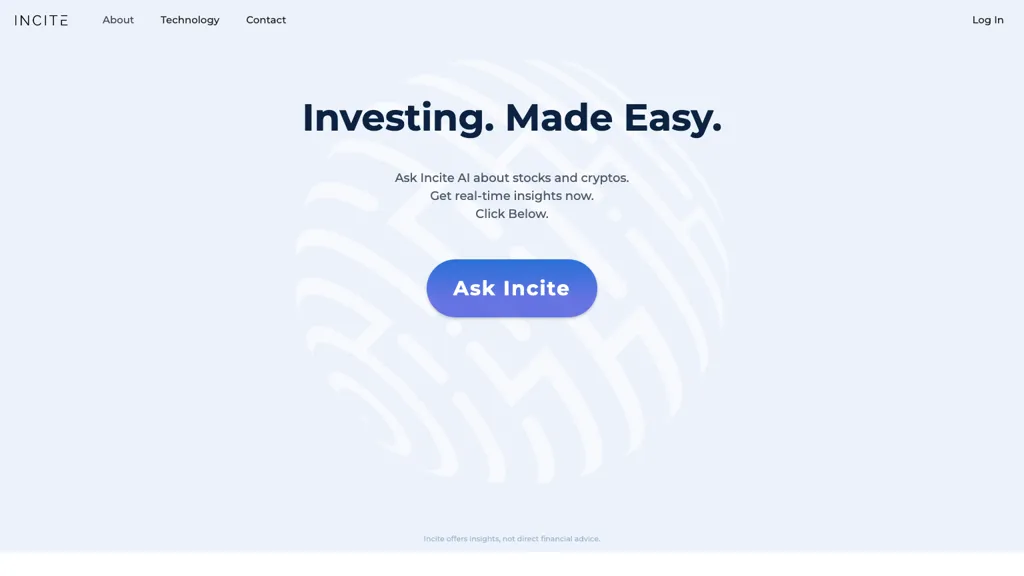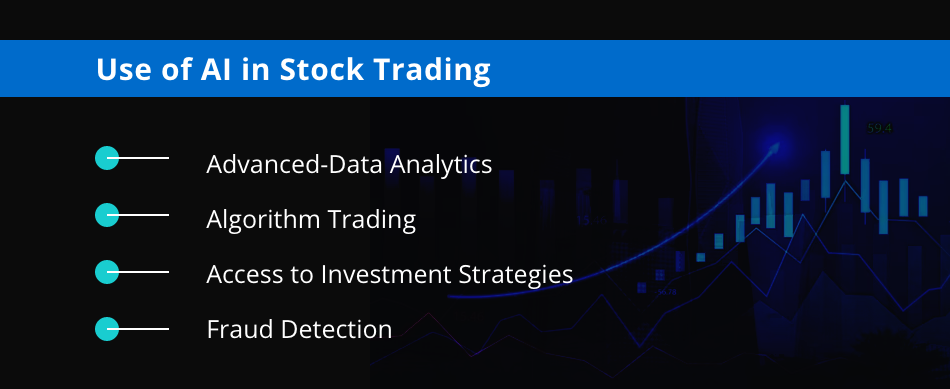Market coverage is among the most important aspects to consider when evaluating AI-based trading platforms. This will determine how many markets and assets can be accessed. A platform that has comprehensive market coverage will allow you to diversify your portfolios, explore global trading opportunities and adapt to various strategies. Here are the top ten tips to determine the market coverage of these platforms.
1. Evaluate Supported Asset Classes
Stocks - Ensure you have access to the major stock exchanges, such as NYSE and NASDAQ. Additionally, make sure that your platform provides small-caps as well as mid-caps.
ETFs: Make sure the platform can support a broad range of ETFs for diversified exposure to different regions, sectors, or even themes.
Futures and options: Check whether the platform is able to handle derivatives such as options, futures, and other leveraged instruments.
Forex and commodities: Assess whether the platform has forex pairs, precious metals, energy commodities as well as agricultural commodities.
Cryptocurrencies Check whether the platform supports popular cryptocurrencies like Bitcoin, Ethereum, and altcoins.
2. Verify the coverage area
Global markets: Make sure that the platform covers major international markets, such as North America, Europe, Asia-Pacific, and emerging markets.
Regional focus Ensure that the platform is specialized in certain markets or regions that align with your trading interest.
Local exchanges. Check whether the platform supports local or region exchanges, that are relevant to your geographical location or your business's strategy.
3. Compare real-time data with delayed Data Delayed data
Real-time Market Data: The platform must provide real-time trading data to facilitate quick decision-making.
Delayed information: Determine whether delayed information is available at no cost or a discounted price that could be sufficient for investors who have an eye on the long term.
Data latency: See whether the platform reduces data latency, especially for high-frequency trading.
4. Evaluation of Data from the Past
Historical data depth If the platform is available, ensure that it has extensive historical data (e.g., 10+ years) for backtesting and analysis.
Check the level of precision in historical data.
Corporate actions: Examine for evidence that data was accounted for prior to. Dividends as well as stock splits and any other corporate actions should be included.
5. Examine the for market depth and order information
Level 2 data: Ensure that the platform has Level 2 data (order book depth) for better price discovery and execution.
Check for real-time bidding and spreads of asking. This will guarantee that the pricing is correct.
Volume data: Check if the platform provides detailed volume data for analyzing market and liquidity.
6. Review the coverage of Indices Sectors
Major indices: Check that the platform includes important benchmarking indices, index-based strategies, and other purposes (e.g. S&P 500, NASDAQ 100, FTSE 100).
Specific data for a specific sector for targeted analysis check if the platform offers data specific to a specific industry (e.g. healthcare, technology or energy).
Custom-made indices. Check if you can create or monitor custom indices according to your own criteria.
7. Assess the Integration of News and Sentiment Data
News feeds : Make sure you have a platform that integrates live news feeds. Ideally, they should come from reliable media sources (e.g. Bloomberg and Reuters) for the most significant market news events.
Check the sentiment analysis tool on the platform based on information from social media, news or any other source.
Strategies based on events: Check if the platform supports event-driven trading strategies (e.g. earnings announcements, economic reports, etc.).
8. Check for Multi-Market Trading Ability
Cross-market trading : Make sure the platform supports trading on multiple assets, markets, and exchanges through one interface.
Currency conversion: Verify if the platform supports multi-currency accounts, as well as automated currency conversion to trade internationally.
Make sure you have support for time zones.
9. Assessment of Alternative Data sources
Alternate data sources: To get new insights, make sure that the platform uses different data sources.
ESG data. Check if the platform has socio-economic, environmental, and governance data to support socially responsible investing.
Macroeconomics data: To conduct a basic analysis, ensure that the platform contains macroeconomic indicators, such as GDP (gross domestic product) inflation rates, GDP and interest rates.
10. Review User Feedback and Market Reputation
Feedback from users: Read user feedback to evaluate the credibility of the platform as well as market coverage.
Verify the credibility of the platform in terms of its coverage or awards for industry.
Case studies: Look for testimonials or case studies which highlight the platform's performance in certain assets or markets.
Bonus Tips
Trial time: You can try the demo, trial, or free trial to check the market coverage and the quality of data.
API access - Check if the API can be used to access information on the market in a programmatic manner.
Customer support: Make sure the platform is able to assist you in the case of market-related questions or issues with data.
With these suggestions, it is possible to be able to accurately evaluate the coverage of AI stock prediction/analyzing trading platform. It is then possible to select a trading platform that offers you the market and the information you need to make successful trades. A broad market coverage will allow you to diversify your portfolio and discover the possibilities of your portfolio. It also assists you adapt to market changes. View the most popular chatgpt copyright examples for site tips including AI stock picker, ai trade, ai for trading, trading with ai, options ai, best ai for trading, ai chart analysis, investment ai, AI stock picker, chart ai trading assistant and more.

Top 10 Suggestions For Evaluating The Ai-Powered Stock Trading Platforms As Well As Their Educational Resources
It is important for users to evaluate the educational resources that AI-driven trading platforms and stock prediction platforms in order to understand how to utilize the platform effectively, comprehend the results and make informed choices. Here are the top 10 tips to determine the usefulness and the quality of these education resources.
1. The most comprehensive tutorials and guides
Tips: Make sure that the platform includes tutorials as well as user guides geared towards beginners as well as advanced users.
What's the reason? Clear directions will assist users to navigate and comprehend the platform.
2. Video Demos as well as Webinars
There are also live training sessions, webinars or videos of demonstrations.
Why: Visual and interactive content can make complex concepts more understandable.
3. Glossary
Tip: Ensure the platform has the definitions or glossaries of important financial and AI-related terms.
The reason: It helps newcomers learn the language that is used on the platform.
4. Case Studies and Real-World Examples
TIP: Make sure there are case studies and examples of the AI models being used in real-world situations.
The reason: Examples of the functionality of the platform as well as its applications are provided to help users understand the platform's features and capabilities.
5. Interactive Learning Tools
Tips - Search for interactive features such as Sandboxes and quizzes.
The reason: Interactive tools let users to test their skills without risking cash.
6. Updated content
Tips: Make sure that educational materials reflect any changes to the marketplace, rules or other new features.
The reason: Incorrect or outdated information can lead to miscommunications and possibly incorrect use of an application.
7. Community Forums that provide Support
Find active forums and support groups where you can ask questions or share your insights.
The reason is peer assistance, expert advice and help from peers can enhance learning.
8. Programs of Accreditation or Certification
See whether there are any certification or training courses accredited by the platform. offered by the platform.
Why: Formal recognition can increase credibility and encourage learners to pursue their education.
9. Accessibility, User-Friendliness, Usability and Usability
Tip: Check how easily accessible and user-friendly educational resources are.
Access to content is easy and allows for users to learn at a pace that suits their needs.
10. Feedback Mechanisms for Educational Materials
Find out if students have feedback on the instructional materials.
Why: User feedback helps increase the value and quality of the content.
Learn in a variety formats
To meet the needs of different learners Make sure that the platform is able to accommodate different preferences. a variety learning formats.
By thoroughly assessing these aspects, you can determine whether the AI trading and stock prediction platform provides robust educational resources to help you realize the potential of it and make educated trading decision. Follow the most popular read more here for best stock prediction website for more tips including ai options trading, free ai tool for stock market india, ai options trading, ai for trading stocks, ai software stocks, ai copyright signals, AI stock price prediction, AI stock trader, AI stock analysis, best AI stock prediction and more.
